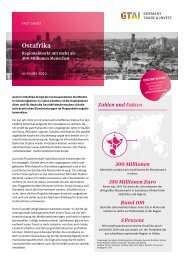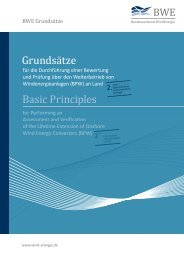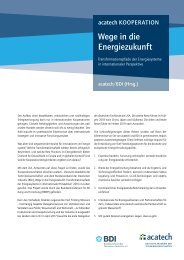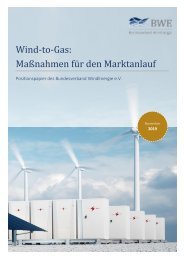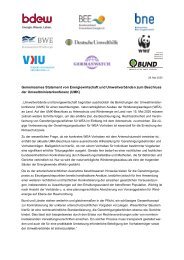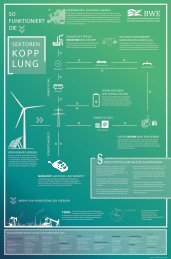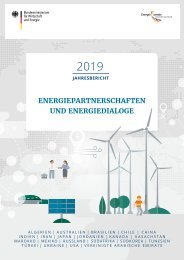Making transition work - Wind Europe
This report provides clear elements on how to make transition work in the coming decade. It provides recommendations to policymakers on how to facilitate a swift transformation of the energy system and considers the policies that will make Europe the best choice for those investing in renewables.
This report provides clear elements on how to make transition work in the coming decade. It provides recommendations to policymakers on how to facilitate a swift transformation of the energy system and considers the policies that will make Europe the best choice for those investing in renewables.
You also want an ePaper? Increase the reach of your titles
YUMPU automatically turns print PDFs into web optimized ePapers that Google loves.
<strong>Making</strong> <strong>transition</strong> <strong>work</strong>: policy<br />
FIGURE 11<br />
Effect of financing costs on the levelised cost of onshore wind energy<br />
160<br />
140<br />
120<br />
$/MWh<br />
100<br />
80<br />
60<br />
40<br />
20<br />
0<br />
0 3% 7% 10% 15%<br />
Financing cost<br />
Refurbishment & decommissioning costs<br />
O&M costs<br />
Investment cost<br />
Source: <strong>Wind</strong><strong>Europe</strong> based on IEA data, 2015<br />
Assumptions: Germany, onshore wind capacity factor 34%<br />
Market platforms can additionally provide for voluntary<br />
financial products to hedge against price and volume<br />
risks, helping wind operators to be fully active in the<br />
market while keeping financing cost low.<br />
2. Adequate allocation mechanism (tender)<br />
The use of competitive tenders for setting and allocating<br />
the premium among market participant can lead to market<br />
efficiency, but for this to happen governments need to<br />
define them carefully. Tenders present participants with<br />
higher risks, such as costly applications, uncertainty over<br />
project selection and guaranteed remuneration. All these<br />
are generally internalised in the submitted bids and could<br />
temporally result in higher support costs.<br />
This is why it is important that small players are given the<br />
opportunity to participate in the market without applying<br />
to tenders given the transaction costs associated with a<br />
tendering process.<br />
In this sense, there is no tender design system that is a<br />
complete success story because tenders are subject<br />
to continuous adaptation of both design elements and<br />
participants’ behaviour. However, in general, for a tender<br />
to be effective, it has to achieve competitive prices and<br />
high realisation rates.<br />
3. Premiums based on energy production<br />
Revenue stabilisation mechanisms that reward energy<br />
production instead of capacity are a more suitable<br />
solution to reach the various energy policy goals.<br />
Governments should adjust the premium regularly so that<br />
the total price for renewables generation (i.e. electricity<br />
price plus price premium) is in line with a target value<br />
(resulting from a competitive tender, or administratively<br />
set value), reducing investment risk and ensuring revenue<br />
stability in the long term.<br />
4. Technology specific mechanisms<br />
Technology neutral schemes might provide, in the short<br />
term, the least-cost solution for implementing a given<br />
amount of renewables in a well-functioning market.<br />
However, to encourage investments in a wider range<br />
of technologies with high potential (in terms of energy<br />
26 <strong>Making</strong> <strong>transition</strong> <strong>work</strong><br />
<strong>Wind</strong><strong>Europe</strong>





